In This Issue
- Infrastructure Attacks
- Verizon Secure Cloud
- Telefonica & Security
- Report from the CEO
- Clinton Email Server
- Cyber Warfare: Race
- Most Orgs Dissatisfied
- Guardians of Change
- Tech in Speaker Race
- Cloud Caucus Leaders
- Acaveo Joins NetApp
- India: Battleground
- Dell to Buy EMC – Big
- Adoption Accelerates
- Intel’s Move to Cloud
- National Drone Show
- Coming DCIA Events
Online Attacks on Infrastructure Increase at Worrying Pace
Excerpted from NY Times Report by Nicole Perloth

Over the last four years, foreign hackers have stolen source code and blueprints to the oil and water pipelines and power grid of the United States and have infiltrated the Department of Energy’s networks 150 times.
So what’s stopping them from shutting us down?
The phrase “Cyber-Pearl Harbor” first appeared in the 1990s.
For the last 20 years, policy makers have predicted catastrophic situations in which hackers blow up oil pipelines, contaminate the water supply, open the nation’s floodgates, and send airplanes on collision courses by hacking air traffic control systems.
“They could, for example, derail passenger trains or, even more dangerous, derail trains loaded with lethal chemicals,” former Defense Secretary Leon Panetta warned in 2012.
“They could contaminate the water supply in major cities, or shut down the power grid across large parts of the country.”
It is getting harder to write-off such predictions as fear mongering… Read More
Verizon Secure Cloud Interconnect Now Available to Public Sector
Excerpted from Verizon Press Announcement
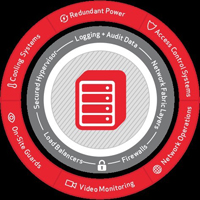 Verizon Enterprise Solutions is removing another barrier to the adoption of cloud computing in the public sector by expanding availability of its Secure Cloud Interconnect service, a software-defined networking (SDN) offering that delivers the security, reliability, performance, simplicity, and efficiency needed to support mission-critical workloads and applications.
Verizon Enterprise Solutions is removing another barrier to the adoption of cloud computing in the public sector by expanding availability of its Secure Cloud Interconnect service, a software-defined networking (SDN) offering that delivers the security, reliability, performance, simplicity, and efficiency needed to support mission-critical workloads and applications.
With public sector organizations across federal, state, local, education, and public safety embracing the benefits of cloud computing, many struggle with the complexity of seamlessly connecting, managing, and securing their cloud environments, which often extend across multiple clouds and data centers.
Verizon Secure Cloud Interconnect helps simplify this complexity by providing a secure, private Internet connection that features consumption-based bandwidth, pre-provisioned on-demand resources, application performance, multiple classes of service, and usage-based billing models with simple provisioning and management via a centralized online portal.
The service — now available at more than 30 locations across the Americas, Latin America, Europe, and the Asia-Pacific region — supports cloud (public, private, and hybrid) and colocation solutions from a growing roster of connected cloud (Amazon Web Services, Google, HP, Microsoft, Salesforce, Verizon) and data center (CoreSite, Equinix, Verizon) providers… Read More
Telefonica Joins Blue Coat, RSA & Intel in Next-Gen Cybersecurity
Excerpted from CBR Report by Charlotte Henry
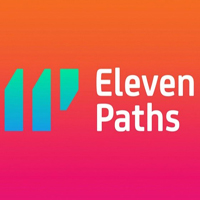 Telecommunications giant Telefonica, and its cybersecurity firm Eleven Paths, have expanded and improved their cybersecurity products after teaming up with some major names in the industry.
Telecommunications giant Telefonica, and its cybersecurity firm Eleven Paths, have expanded and improved their cybersecurity products after teaming up with some major names in the industry.
Telefonica has signed strategic alliances with Alien Vault, BlueCoat, Intel Security, Palo Alto Networks, RSA, and Vaultive, to boost its cybersecurity offering.
The new products will help locate mobile malware, prevent information leaks, and also help firms with governance, risk, and compliance.
For example, Telefonica is now offering integration with Palo Alto’s WildFire cloud-based malware analysis and prevention service, along with Eleven Paths’ Tacyt cyber-intelligence tool, and the open Sinfonier real-time information source processing service.
Intel Security’s management system will be another integrated feature as part of the set of alliances.
The announcements were made at the company’s Security Innovation Day (SID) conference.
Mobile devices are becoming increasingly vulnerable to cybersecurity breaches, and leaks from insecure apps… Read More
Report from DCIA CEO Marty Lafferty
 Following up on the CNN debate this week among Democratic candidates for President of the United States, which major party hopeful demonstrates the most digital aptitude in an increasingly connected world?
Following up on the CNN debate this week among Democratic candidates for President of the United States, which major party hopeful demonstrates the most digital aptitude in an increasingly connected world?
As instartlogic notes: we should all want a candidate who understands technology.
Digital tools will change the way the President governs — from organizing supporters to defending against attacks to communicating with everyday citizens.
So who will be the most digitally effective President?
Well, it turns out to be neither Donald Trump nor Hillary Clinton.
Six criteria were used to determine the winner:
Website performance, number of analytic tools, social media presence, SSL security, use of a content delivery network (CDN), and social networking effectiveness.
Performance and security are telling aspects of a candidate’s web infrastructure; and website size does not necessarily correlate with speed.
Marco Rubio has the fastest performing website despite it being one of the heaviest sites.
Efficient content delivery requires a CDN — and 87% of Presidential candidates use one.
An SSL certificate is a must-have for website security — but 20% of candidates do not use one even though they’re accepting donations.
Analytic tools, which supplant analog polls, enable greater effectiveness in targeting messages to specific audiences.
The most widely used are Google Analytics, Optimizely, mixpanel, RapLeaf, and MediaMath.
Social platforms, supplanting TV ads, enable reach to forge relationships with many citizens: connecting with real world people about real world issues.
Rubio uses the most, including Facebook, Twitter, YouTube, Google Plus, Instagram, Vimeo, Flickr, Tumbler, and Pinterest.
Overall, the most digitally effective Presidential candidates, based on all six criteria, are, for the Democrats, Bernie Sanders, also the oldest candidate at age 74; and for the Republicans, Marco Rubio, the youngest at age 45.
An interesting takeaway from the analysis: age and growing up in the computer era have no apparent correlation with digital effectiveness.
More to come on the candidates’ technology policies in future editions of DCINFO. Share wisely, and take care.
Clinton Email Server Set-Up Risked Intrusions
Excerpted from ABC News / AP Report by Jack Gillum and Stephen Braun
 The private email server running in Hillary Rodham Clinton’s home basement when she was Secretary of State was connected to the Internet in ways that made it more vulnerable to hackers while using software that could have been exploited, according to data and documents reviewed by The Associated Press.
The private email server running in Hillary Rodham Clinton’s home basement when she was Secretary of State was connected to the Internet in ways that made it more vulnerable to hackers while using software that could have been exploited, according to data and documents reviewed by The Associated Press.
Clinton’s server, which handled her personal and State Department correspondence, appeared to allow users to connect openly over the Internet to control it remotely, according to detailed records compiled in 2012.
Experts said the Microsoft remote desktop service wasn’t intended for such use without additional protective measures, and was the subject of US government and industry warnings at the time over attacks from even low-skilled intruders.
Records show that Clinton additionally operated two more devices on her home network in Chappaqua, NY, that also were directly accessible from the Internet.
One contained similar remote-control software that also has suffered from security vulnerabilities, known as virtual network computing, and the other appeared to be configured to run websites.
The new details provide the first clues about how Clinton’s computer, running Microsoft’s server software, was set-up… Read More
Cyber Warfare: The New Arms Race
Excerpted from Hacked Report by Elliot Maras
 After spending billions to build nuclear weapons, a different arms race has emerged in cyber warfare.
After spending billions to build nuclear weapons, a different arms race has emerged in cyber warfare.
Where the nuclear arms race pits the larger countries against each other, the cyber arms race includes a much larger number of combatants since it is open to almost anyone with cash and a computer, according to a front-page article in the Wall Street Journal.
The article noted that computer attacks by countries against each other have kicked off a frantic digital arms race with nations racing to develop stockpiles of malicious code.
One reflection of the seriousness of this new arms race is that two longtime cyber adversaries, the US and China, agreed last month not to conduct certain cyber-attacks against one another.
There are a multitude of weapons in a cyber arsenal.
Some of the types of attacks that counties can use include denial of service, sleeper malware, phishing, tricking radar, and infrastructure sabotage.
The major players in this new cyber warfare include the US, Russia, China, Iran, and North Korea… Read More
Most Orgs Dissatisfied with Attack Containment / Recovery Times
Excerpted from MarketWired Report
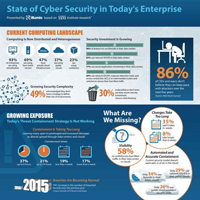 SANS, the global leader in information security training and analysis, today announced the availability of its first State of Dynamic Data Center and Cloud Security in the Modern Enterprise survey and research report.
SANS, the global leader in information security training and analysis, today announced the availability of its first State of Dynamic Data Center and Cloud Security in the Modern Enterprise survey and research report.
The report reveals challenges organizations face when trying to prevent and contain attacks, and provides expert guidance on how to secure dynamic data centers and cloud environments.
Authored by SANS expert analyst Dave Shackleford, it includes results of a survey that polled 430 security and risk professionals from the SANS community, all working in private and public sector organizations ranging in size from 100 to more than 15,000 employees.
SANS community members polled in this survey are deeply involved in developing their organizations’ overall security strategies, choosing effective technologies and are on the front lines in the fight against attackers.
Survey findings provide key insights into understanding and improving data center and cloud security.
Of note, 55 percent of respondents were dissatisfied with the length of time it takes them to contain and recover from attacks. When it comes to limiting damage and preventing data breaches, time continues to be the biggest challenge… Read More
Are Cybersecurity Pros the New Guardians of Digital Change?
Excerpted from ARN Report by James Henderson

Changes in computing fabric, devices and services formed by digital business continue to shape risk and security landscapes.
According to Gartner, by year-end 2017, more than 20 percent of enterprises will have digital risk services devoted to protecting business initiatives using devices and services in the Internet of Things (IoT).
“Business imperatives have driven the convergence of the Internet of people, computers and things, transforming most enterprises into digital businesses and reshaping cybersecurity,” says Christian Byrnes, Managing Vice President, Gartner.
“An inflection point in business and technological innovation has occurred, which we refer to as the ‘digital explosion’ and the ‘race to the edge.”
Byrnes say the traditional model ascribed for decades to IT security has been one of confidentiality, integrity, and availability (CIA) – most organizations in 2015 have not shown a consistent ability to substantially mitigate those risks.
The CIA model is still relevant and applicable in cybersecurity, but it isn’t enough.
The race to the edge has pushed the environment for protecting data and infrastructure into the physical world… Read More
Tech, Cyber Voices Emerge in Wide-Open Speaker Race
Excerpted from The Hill Report by Cory Bennett
 The wide-open Speaker race has thrust several of the House’s more prominent tech and cybersecurity voices into the spotlight.
The wide-open Speaker race has thrust several of the House’s more prominent tech and cybersecurity voices into the spotlight.
Majority Leader Kevin McCarthy’s (R-CA) decision to abruptly pull himself from contention for the Speakership just minutes before a vote Thursday has upended the process and opened the door to a number of dark-horse candidates.
Congresspersons Jason Chaffetz (R-UT), Lynn Westmoreland (R-GA), Darrell Issa (R-CA), and Candice Miller (R-MI) have all been floated as possibilities to succeed outgoing House Speaker John Boehner (R-OH), who retires at the end of this month.
In recent years, each has made a mark speaking out on issues like the government’s lagging cyber-defenses, surveillance reform, and encryption standards.
While these topics will likely be a non-factor in the actual race for the House’s top spot, the digital rights community is intrigued by the concept of having a tech-savvy Speaker for perhaps the first time in Congressional history.
“That’s exactly what the Republican Party needs,” said Berin Szoka, President of TechFreedom, a libertarian-leaning think tank. “Issues like privacy are areas where you could actually get legislation passed that Republicans have led… Read More
Cloud Computing Caucus Welcomes Three New Co-Chairs
Excerpted from CCAG Press Announcement
 Today the Cloud Computing Caucus Advisory Group, in which the DCIA participates, announced three new Caucus Co-Chairs, and a growing roster of upcoming cloud programs.
Today the Cloud Computing Caucus Advisory Group, in which the DCIA participates, announced three new Caucus Co-Chairs, and a growing roster of upcoming cloud programs.
Representatives Barbara Comstock (R-VA), Ted Lieu (D-CA), and Mark Walker (R-NC) join founding member Congressman Gerry Connolly (D-VA) as Co-Chairs of the bipartisan member organization, focused on educating Congress about the benefits and potential of cloud computing.
“I am pleased to announce that I will be co-chairing the Congressional Cloud Caucus, along with Representative Connolly, Representative Comstock, and Representative Lieu”
The Cloud Computing Caucus Advisory Group, a non-profit, non-partisan organization promoting the goals of the Caucus, announced its support for the new co-chairs.
“The Caucus Advisory Group annual State of Federal Cloud report pegs cloud adoption at about one percent of the Federal $80 billion IT spend,” said David Hantman, Executive Director, Cloud Computing Caucus Advisory Group.
“Things are moving too slowly — and clearly the Hill is getting more interested in seeing progress… Read More
Acaveo Joins NetApp Alliance Program
Excerpted from Acaveo Press Announcement
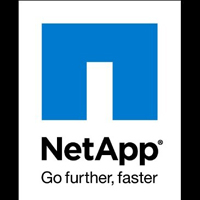 Acaveo, a leading provider of file analysis software solutions, announced at this week’s NetApp Insight 2015 that it has joined NetApp’s Alliance Program at the Advantage level.
Acaveo, a leading provider of file analysis software solutions, announced at this week’s NetApp Insight 2015 that it has joined NetApp’s Alliance Program at the Advantage level.
Acaveo is working with NetApp to provide customers with file analysis solutions to help better manage heir unstructured corporate data.
By partnering with NetApp, Acaveo will have the opportunity to help customers optimize their corporate data storage with a deep dive into their unstructured data that has previously been deemed “dark.”
The result for customers is better information governance and storage management actions with detailed metadata and contextual information.
“As a part of the NetApp Alliance Program, customers will benefit from Acaveo’s file analysis solution that provides insight into the current state of unstructured, employee-generated data.”
“Our solutions combined with NetApp’s storage management services enable organizations to optimize their overall resources and investments,” said Mike Bray, Vice President of Business Development at Acaveo… Read More
India: Latest Battleground for Big Cloud Computing Providers
Excerpted from Fortune Report by Barb Darrow
 IBM opened a SoftLayer cloud data center in Chennai on Tuesday.
IBM opened a SoftLayer cloud data center in Chennai on Tuesday.
It’s the company’s first in India, and the latest in a tech industry trend.
A few weeks ago Microsoft announced three new Azure cloud data center regions in Pune, Hyderabad, and Chennai.
Amazon Web Services executives also call India a key strategic area.
You have to wonder why it took so long, given India’s technological strengths.
As IBM pointed out in its press release, India is home to a super-heated tech scene.
Evans Data Corp. estimates there are 2.75 million developers in India, making it the second-largest country (after the US) in that regard.
And it expects the Indian developer population to soar 90% to 5.2 million in the next three years.
India’s preponderance of developers should be no surprise; after all, it has been home to many large outsourcing shops… Read More
Dell to Buy EMC in Biggest Tech Takeover — A Year in the Making
Excerpted from NY Times Report by Michael de la Merced
 Boston was all but frozen on February 4th, as the city grappled with another day locked in winter’s grip.
Boston was all but frozen on February 4th, as the city grappled with another day locked in winter’s grip.
Yet at the city’s Logan International Airport, EMC‘s longtime Chairman and chief executive, Joseph M. Tucci, and a top lieutenant quietly met with a co-owner of Dell to discuss what eight months later would become the biggest takeover ever of a technology company.
In buying EMC for about $67 billion, Dell is embarking on the most ambitious — and riskiest — step in its turnaround plan to date.
Adding the data storage provider to its own suite of offerings, including network servers, will bolster Dell’s standing as a major one-stop shop for business customers.
Getting to Monday’s announcement of the transaction was a yearlong journey of some 50 confidential meetings in private homes and hotels in suburban towns across the country, drawing in Mr. Tucci, Michael S. Dell, and top bankers like Jamie Dimon of JPMorgan Chase.
More important, it meant testing the limits of the debt markets… Read More
Speed of Cloud Adoption Accelerates Faster than Expectations
Excerpted from CloudTech Report by Jennifer Brenner
 I recently read with interest the latest research from the Cloud Industry Forum (CIF) which shows the overall cloud adoption rate in the UK now stands at 84%, with almost four in five (78%) of cloud users having adopted two or more cloud services.
I recently read with interest the latest research from the Cloud Industry Forum (CIF) which shows the overall cloud adoption rate in the UK now stands at 84%, with almost four in five (78%) of cloud users having adopted two or more cloud services.
It might surprise you to know that this statistic has shifted from 48% in 2010 to 84% in 2015.
The conclusion is that cloud is certainly helping organizations meet their business objectives, with a significant proportion of cloud adopters managing to reduce their capital expenditure, improve the reliability of their IT and reduce the risk of data loss.
What’s even more telling and thought provoking than the overall cloud adoption rate, however, is that the speed of cloud adoption is also increasing at a much faster rate than many in the hi-tech industry anticipated. That the migration to cloud would be vast and all-encompassing has long been accepted as inevitable, but the pace of this adoption has still been a bit of an open question.
That question, it seems, has now been answered… Read More
Intel’s Results Reflect Move to Cloud Computing
Excerpted from NY Times Report by Quentin Hardy
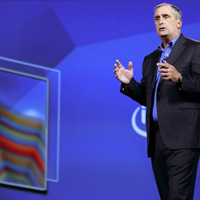 The Intel Corporation is changing with the times.
The Intel Corporation is changing with the times.
Intel became the world’s biggest producer of semiconductors thanks mostly to personal computers, which eventually led to chips for server computers.
Now, the new hot trend of cloud computing — data centers filled with tightly connected servers — is remaking Intel.
On Tuesday, Intel, based in Santa Clara, CA, said that in the three months that ended September 26th, PC chips brought in $8.5 billion and chips for servers in cloud computing data centers brought in $4.1 billion.
A year ago, PC chips brought in $9.2 billion and data center chips brought in $3.7 billion.
The shifting businesses at Intel reflect broader changes in the computing industry, and what Intel chooses to focus on can affect the choices of many other companies.
PC sales are in a long decline, as customers increasingly use online services connected to mobile devices.
While Microsoft and others try to revive the market with new designs and tablet-like models… Read More
Don’t Miss the National Drone Show
Excerpted from Government Video Expo Announcement
 New at the Government Video Expo (GVExpo) this year is the National Drone Show, an exciting new conference and expo for the continuously expanding drone marketplace — a market that is projected to be a multi-billion dollar opportunity over the next 10 years.
New at the Government Video Expo (GVExpo) this year is the National Drone Show, an exciting new conference and expo for the continuously expanding drone marketplace — a market that is projected to be a multi-billion dollar opportunity over the next 10 years.
The buzz from drones are more than just propeller sounds — this technology is changing the way we work.
Co-located with the DCIA co-sponsored GVExpo, the National Drone Show is the best place to learn the latest techniques and see them in action.
The National Drone Show will feature: a drone flying cage for exhibitor product demonstrations; free-to-attend sessions on the exhibit floor, covering the latest drone technology and regulatory tips; in-depth training sessions for drone users; and a drone production panel discussion from TIVA-DC.
Instructors from Unmanned Vehicle University, the only university in the world licensed to offer graduate degree programs in unmanned systems engineering, will conduct drone-operating demonstrations in the show’s flying cage.
Register today for your free Exhibit Hall Pass to both GVExpo and the National Drone Show! Click here for more information… Read More
Coming Events of Interest
Digital Hollywood Fall — October 19th-22nd in Marina Del Rey, CA. The future of the entertainment industry. Digital Hollywood debuted in 1990 and has from its start been among the leading trade conferences in its field.
2015 US Cyber Crime Conference — November 14th-20th in National Harbor, MD. This is the only event of its kind that provides both hands-on digital forensics training and an interactive forum for cyber professionals to network.
Cloud Asia Forum — November 24th-25th in Hong Kong. Now in its sixth year, this major highlight of the Cloud World Series sponsored by Informa Telecoms & Media is the most comprehensive cloud computing event in Asia.
Government Video Expo — December 1st-3rd in Washington, DC. Sponsored by NewBay Media, GVE 2015 will be the East Coast’s largest technology event designed for video, broadcast, and audio-video professionals.
Internet of Things World Forum (IoTWF) — December 6th-8th in Dubai. IoTWF is an exclusive event that brings together the best and brightest thinkers, practitioners, and innovators from business, government, and academia to accelerate the market adoption of the Internet of Things.
CES — January 6th-9th in Las Vegas, NV. The world’s gathering place for all who thrive on the business of consumer technologies. CES has served as the proving ground for innovators and breakthrough technologies for more than 40 years.
ADRM Working Group Meeting — January 28th via Global Videoconference. Contact the DCIA for information about joining the group and attending the meeting that will focus on interoperability among DRM platforms and simplifying DRM implementation.
Cloud and DevOps World Forum 2016 — June 21st-22nd in London, England. Now in its eighth year, C&DWF is firmly established as the leading content-led exhibition for the European Cloud and DevOps community and the premiere meeting place for CIOs.
